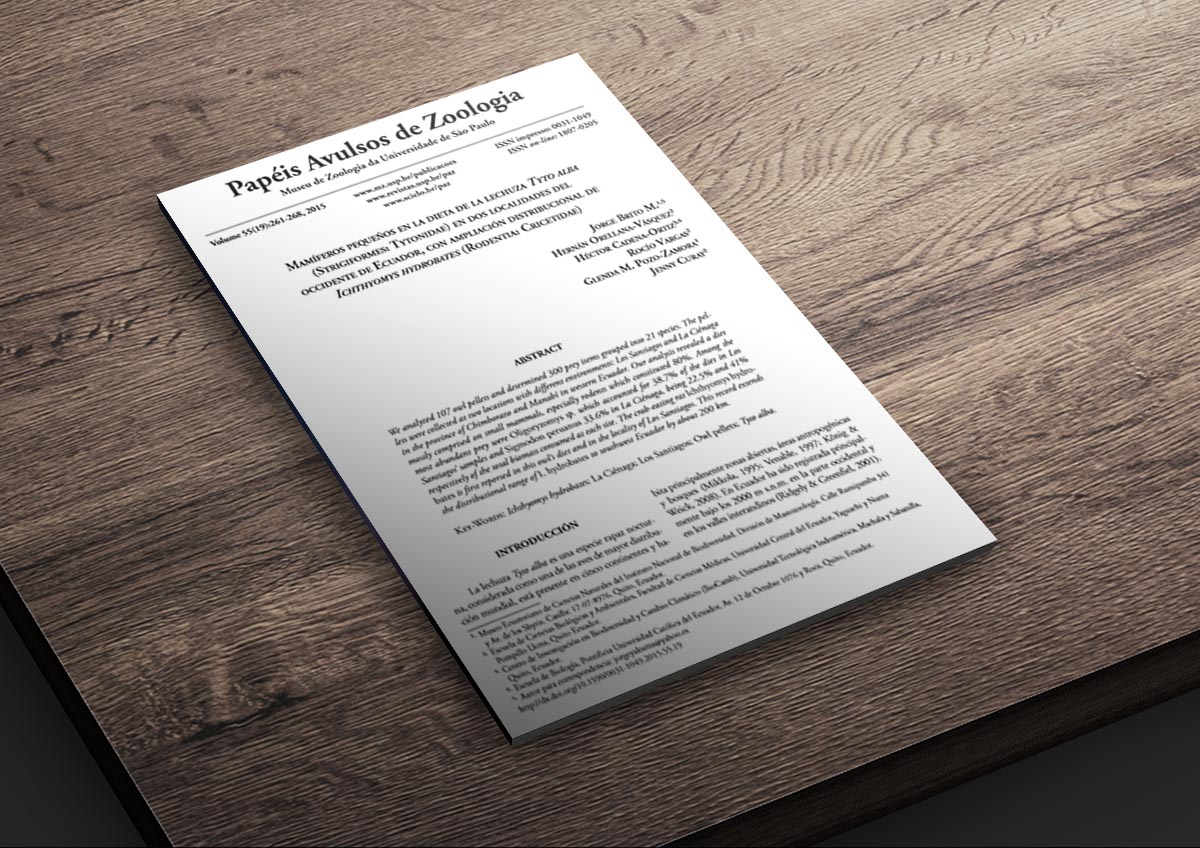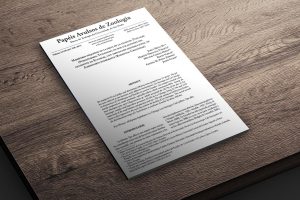Phylogeography of the Chocó Endemic Rainbow Characin (Teleostei: Rhoadsia)
| Título: | Phylogeography of the Chocó Endemic Rainbow Characin (Teleostei: Rhoadsia) |
| Identificador de recurso: | https://bioone.org/journals/ichthyology-and-herpetology |
| Fecha: | 2022-03-10 |
| Autor: | Cucalón, R. V.; Valdiviezo-Rivera, J.; Jiménez-Prado, P.; Navarrete-Amaya, R.; Shervette, V. R.; Torres-Noboa, A.; Wierzal, N.; Karpan, K. C.; Borders, T.; Calle P.; Lujan, N. K.; Aguirre, W. E. |
| Otros colaboradores: | |
| Editorial: | The American Society of Ichthyologists and Herpetologists |
| Derechos: | Acceso Abierto |
| Descripción |
South America’s Chocó, part of the North Andean Pacific Slopes–Rio Atrato ecoregion, is a biodiversity hotspot with many disjunct rivers, yet phylogeographic and population genetic studies of the Chocó’s aquatic species are scarce. Rhoadsia is a Chocó endemic freshwater fish genus with two recognized species: R. minor from the upper Esmeraldas River drainage and R. altipinna from the lower Guayas River drainage, Ecuador. Little is known about the evolutionary history of Rhoadsia, and due to morphological similarities, the validity of the two nominal species has been questioned. We conducted a phylogeographic study using two mitochondrial genes and 12 microsatellite markers to examine the evolutionary history of Rhoadsia and the validity of its two species. Samples collected in drainages throughout western Ecuador from sea level to 1260 m.a.s.l. were included, as were samples of species in the closely related genera Parastremma and Carlana from Colombia and Central America. Phylogenetic analysis of the mtDNA markers confirmed the reciprocal monophyly of a northern and southern clade, and the presence of mitochondrial haplotypes of both clades in the northern Guayas basin. Structure analysis with the microsatellite markers pointed to introgression at the border between the species ranges as the likely cause of the mixing of mitochondrial haplotypes in the northern Guayas. Bayesian analysis of the microsatellite data revealed the existence of ten populations throughout western Ecuador, divided into three main geographically segregated groups. Group I coincided with the northern distribution of R. minor, while groups II and III seemed to represent geographic subgroups of R. altipinna in the Guayas and southern coastal drainages. Patterns of genetic divergence and diversity support the recognition of multiple evolutionarily significant units within both species and allowed reevaluation of previously reported freshwater biogeographic zones in the Ecuadorian Chocó. This study provides a baseline for future studies examining freshwater biogeographical patterns throughout the Ecuadorian Chocó, as well as a phylogeographic framework to examine the genetic basis of adaptation of morphologically divergent populations of Rhoadsia inhabiting Andean mountain streams in the region.
|
| Claves |
|
| Relación | e-ISSN: 2766-1520 |
| Cobertura | EC |
| Idioma | en |
| Volumen | 110(1) |
| Formato | |
| Tipo de recurso | texto |
| Fuente | https://doi.org/10.1643/i2020092 |
| Descarga | https://doi.org/10.1643/i2020092 |



